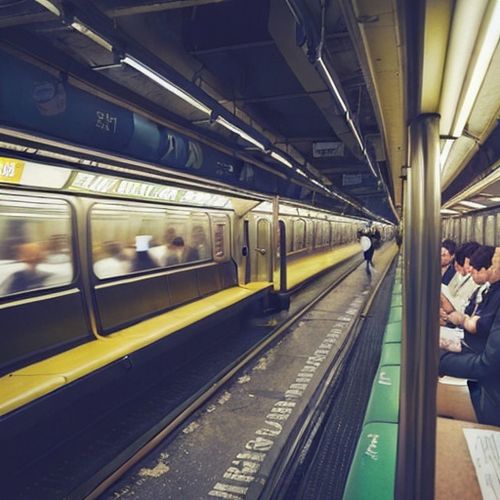In today's fast-paced world, the daily commute has become an unavoidable reality for millions. What most people consider wasted time stuck in traffic or crammed into subway cars actually represents a golden opportunity for personal growth. The emerging practice of micro-learning transforms these fragmented moments into productive learning sessions that compound over time.
The hidden potential of commute time often goes untapped. Research from University College London reveals the average urban commuter spends about 240 hours annually traveling to and from work - equivalent to six standard work weeks. This staggering amount of time, when properly utilized, can lead to mastering new languages, acquiring professional certifications, or consuming dozens of books each year.
Successful micro-learning during commutes requires understanding the unique constraints and opportunities of these fragmented periods. Unlike structured classroom settings or focused study sessions at home, commute-based learning happens in unpredictable environments with frequent interruptions. The key lies in developing systems that work with these limitations rather than against them.
Audio-based learning emerges as the most obvious solution for commuters, particularly those driving or navigating crowded public transport. The rise of podcasting has created an abundance of high-quality educational content across every imaginable subject. From language lessons to business case studies to scientific discoveries, there's an audio program catering to nearly every learning goal. The secret lies in curating playlists aligned with specific objectives and downloading content for offline access to avoid connectivity issues.
Many professionals report completing entire certification programs simply by listening to audio courses during their daily drives. The auditory format proves particularly effective for conceptual learning where visualization isn't critical. For subjects requiring visual components, some learners combine audio with brief review sessions using mobile apps during waiting periods at stations or stops.
The spaced repetition technique transforms brief commute windows into powerful memory reinforcement sessions. Cognitive science demonstrates that information retention improves dramatically when exposure happens across distributed intervals rather than in single marathon sessions. Mobile apps leveraging this principle allow commuters to spend just 5-10 minutes reviewing flashcards or answering quiz questions with algorithms that determine optimal repetition timing.
This approach works exceptionally well for vocabulary building, mathematical formulas, legal statutes, medical terminology, or any subject requiring memorization. The beauty lies in how these micro-sessions accumulate knowledge gradually without overwhelming the learner. Many users find they retain information better through daily five-minute commute reviews than through hours of cramming before exams.
Curated reading sprints offer another productive use of commute time for those using public transportation. While deep reading proves challenging in moving vehicles, the strategy involves saving specific article collections or book excerpts for consumption during transit. The trick is pre-selecting materials that match the typical duration of commute segments - perhaps one long-form article for a subway ride or several brief news analyses for a bus trip with multiple stops.
Advanced practitioners often combine this with note-taking apps to capture key insights or action items that arrive during reading. Some maintain dedicated commute reading lists separate from their primary reading goals, focusing on professional development or skill-building content during transit while reserving leisure reading for home environments.
The psychological benefits of commute learning extend beyond knowledge acquisition. Many participants report reduced stress and increased sense of control over their time. What was previously a frustrating daily obligation transforms into a scheduled opportunity for growth. This mindset shift often creates positive ripple effects throughout other areas of life.
Implementation strategies vary based on individual circumstances, but successful adopters share common traits. They begin by auditing their typical commute to identify usable time segments and environmental factors. Next, they set specific micro-learning goals aligned with larger personal or professional objectives. Perhaps most importantly, they build systems rather than relying on motivation - pre-loading content the night before or creating automatic playlists that remove decision fatigue during busy mornings.
Technology plays a crucial supporting role in commute learning. Beyond content apps, tools like speed control for audio (allowing faster playback without pitch distortion), offline dictionaries, and distraction-blocking apps help maximize limited time. Savvy learners often test multiple app combinations to discover what works best for their particular learning style and commute conditions.
The cumulative impact of commute learning often surprises practitioners. What begins as an experiment in time management frequently evolves into a transformative habit. Over months and years, these daily learning increments lead to significant knowledge gains without requiring lifestyle overhaul. Professionals report career advancements from skills acquired during transit, language learners achieve fluency without formal classes, and curious minds explore diverse subjects they never found time for previously.
Overcoming common challenges represents the final piece of the commute learning puzzle. Motion sickness affects some public transport readers, solved by switching to audio formats or focusing on distant objects periodically. Connectivity issues in tunnels or rural areas require offline content preparation. Mental fatigue after work hours may necessitate lighter learning materials for evening commutes. Each obstacle has practical solutions when approached systematically.
The most successful practitioners view their commute time as a personal learning lab - constantly experimenting with new formats, subjects, and techniques. They track progress not in hours but in content completed or concepts mastered. Perhaps most importantly, they maintain flexibility, recognizing that some days will prove more productive than others. The power lies in consistency over perfection.
As work-from-home arrangements reshape traditional commuting patterns, the principles of micro-learning apply equally to other life intervals - waiting rooms, school pickup lines, or queueing at stores. The fundamental insight remains: modern life contains countless underutilized minutes that collectively represent massive learning potential. By applying these strategies systematically, anyone can transform dead time into growth opportunities that compound throughout their lifetime.

By /May 21, 2025

By /May 21, 2025

By /May 21, 2025

By /May 21, 2025

By /May 21, 2025

By /May 21, 2025

By /May 21, 2025

By /May 21, 2025

By /May 21, 2025

By /May 17, 2025

By /May 17, 2025

By /May 17, 2025

By /May 17, 2025

By /May 17, 2025

By /May 17, 2025

By /May 17, 2025

By /May 17, 2025

By /May 17, 2025

By David Anderson/Apr 29, 2025